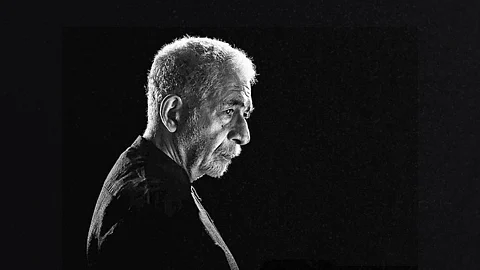
- HOMEGROWN WORLD
- #HGCREATORS
- #HGEXPLORE
- #HGVOICES
- #HGSHOP
- CAREERS
- ABOUT US
- CONTACT US

As veteran actor Naseeruddin Shah turns 75 (Sunday, July 20, was his 75th birthday), it’s tempting to reflect on the vast scope of his five-decade career — over 200 films, countless stage performances, and a body of work that spans gritty parallel cinema, high-octane Bollywood movies, and razor-sharp theatre work. But Shah’s legacy lies in the power of his presence — both as an actor who made his portrayals of human complexity thoroughly watchable and entertaining, and as a public figure who consistently questioned the culture he belonged to.
Born in Barabanki, Uttar Pradesh, in 1950, Naseeruddin Shah entered the film industry just as winds of change were sweeping through Indian cinema. Trained at the National School of Drama and FTII, he quickly became a key figure of the 1970s New Wave. Directors like Shyam Benegal, Govind Nihalani, and Saeed Akhtar Mirza saw in Shah an actor capable of expressing moral anguish without leaning into melodrama. Whether portraying the visually impaired, idealistic school principal in Sparsh (1980), the moralistic public prosecutor in Aakrosh (1980), or the everyman mechanic seething with righteous rage in Albert Pinto Ko Gussa Kyoon Aata Hai (1980), Shah brought a raw, unsettling energy to the screen.
What set Shah apart was his refusal to be confined or defined by any one label. At a time when parallel cinema actors were seen as too niche for mainstream Bollywood movies, Shah transitioned effortlessly across the commercial and arthouse divide. From Karma (1986) and Tridev (1989) to Mohra (1994) and Sarfarosh (1999), he embraced the excesses of masala films without ever becoming predictable. His performances always carried an undercurrent of tension — implying something deeper was at stake. Even in a generic thriller like A Wednesday (2008), Shah turned a common man's switch to vigilantism into a disturbing moral dilemma.
Beyond film, Shah’s impact on Indian theatre has been equally profound. Through Motley Productions — the company he co-founded with his wife Ratna Pathak Shah and close collaborators — he introduced Beckett, Ibsen, and Chughtai to Indian audiences with simple brilliance. For many, his austere, authentic, and fiercely intelligent performances in adaptations of Ismat Apa Ke Naam and Waiting for Godot remain benchmarks in contemporary Indian theatre.
Shah has also been a fierce critic of India’s compromised institutions, and of himself. His memoir And Then One Day (2014) is startling in its honesty, detailing his failures, addictions, and insecurities with biting wit. In interviews, essays, and in public forums, Shah has criticised Bollywood’s nepotism, the mediocrity of contemporary acting and film-making, and the rise of jingoistic cinema in India. He has spoken out against communal politics, the erosion of secular values, the fear that now stalks public discourse, and questioned the role of artists in this climate of fear and oppression. For this, he has been trolled, vilified, and labelled “anti-national”.
And yet, Shah shows no signs of slowing down. He continues to act and to speak out, whether against censorship, communalism, or the decline of creative risk in Indian cinema. His critiques of Indian cinema and society stem from deep disappointment in what Indian cinema and democracy could have been. For younger actors, he remains both a benchmark and a warning: a reminder that success without substance is hollow, and that conscience often comes at a cost.
Looking back at Shah’s decades-long career is to trace the evolution of modern Indian cinema itself — from the stiff theatricality of pre-70s cinema to the method-based realism Naseeruddin Shah himself helped introduce to the Bollywood screen. But more than that, it is to understand what it means to be an artist in a time of inequality and oppression.
At 75, Shah continues to work, teach, and provoke. He remains, in the truest sense, an actor’s actor — but also something rarer: a citizen-artist who believes in speaking truth to power.
